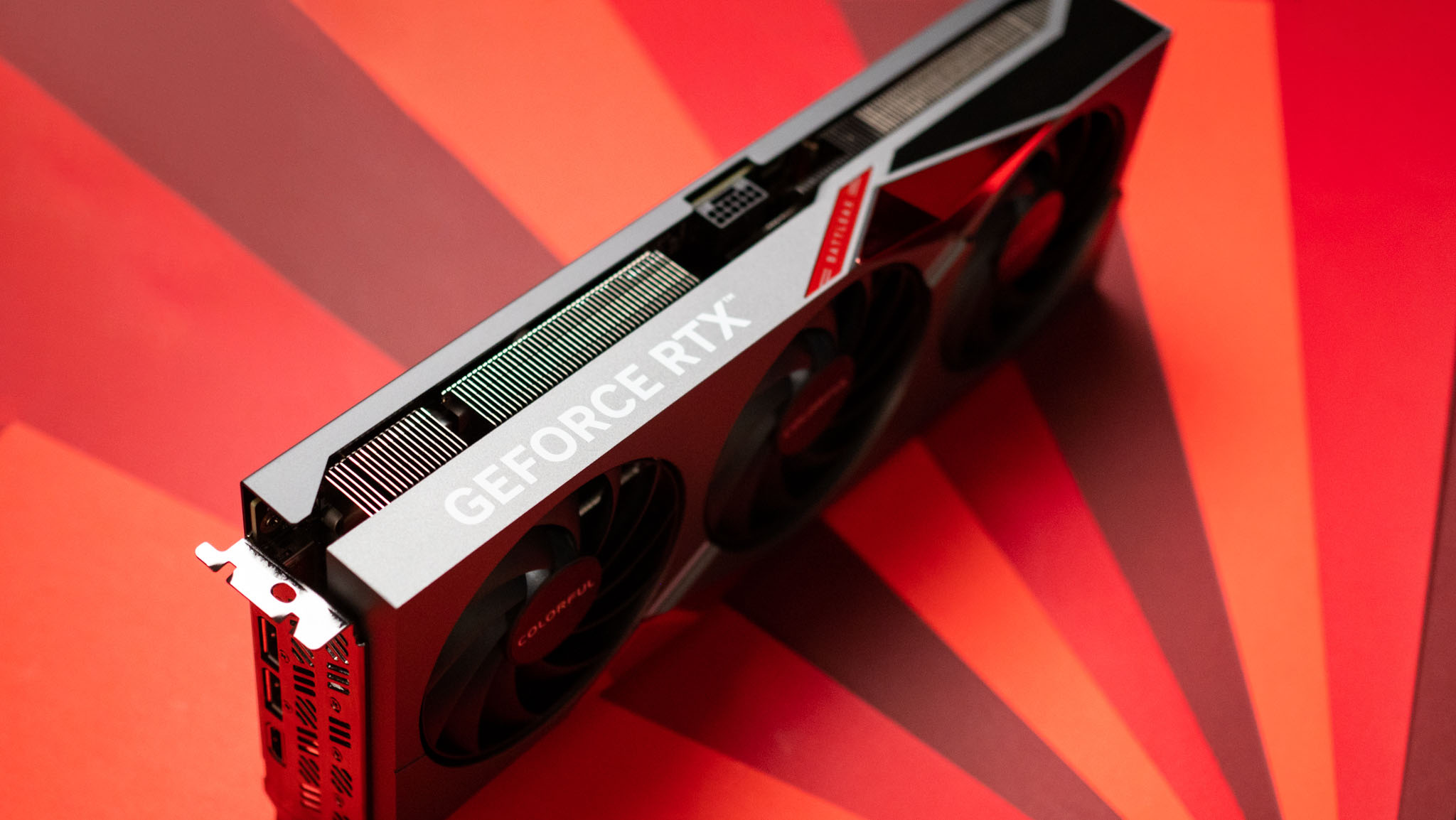Best Thunderbolt docks and hubs in 2025
These Thunderbolt laptop docks come out on top of all we've tested so far at Windows Central, and there's a great option for all users.
Thunderbolt is one of the most common ports found on a modern laptop, and pairing it with a high-end laptop docking station can significantly improve your workflow.
Thunderbolt 4 took over for Thunderbolt 3 following its 2020 launch, and even Thunderbolt 5 docks have begun showing up for those who want to future-proof their desk.
My top pick after hundreds of hours of testing, years of full-time use, and many reviews is the CalDigit TS4. The Windows Central team and I have tested a lot of other great Thunderbolt 4 and Thunderbolt 5 docking stations, and I've included them here as top alternatives.
Recent updates
April 9, 2025: My top picks haven't changed, but I've added a few new honorable mentions as well as further information about how we test laptop docks at Windows Central. — Cale Hunt
The quick list
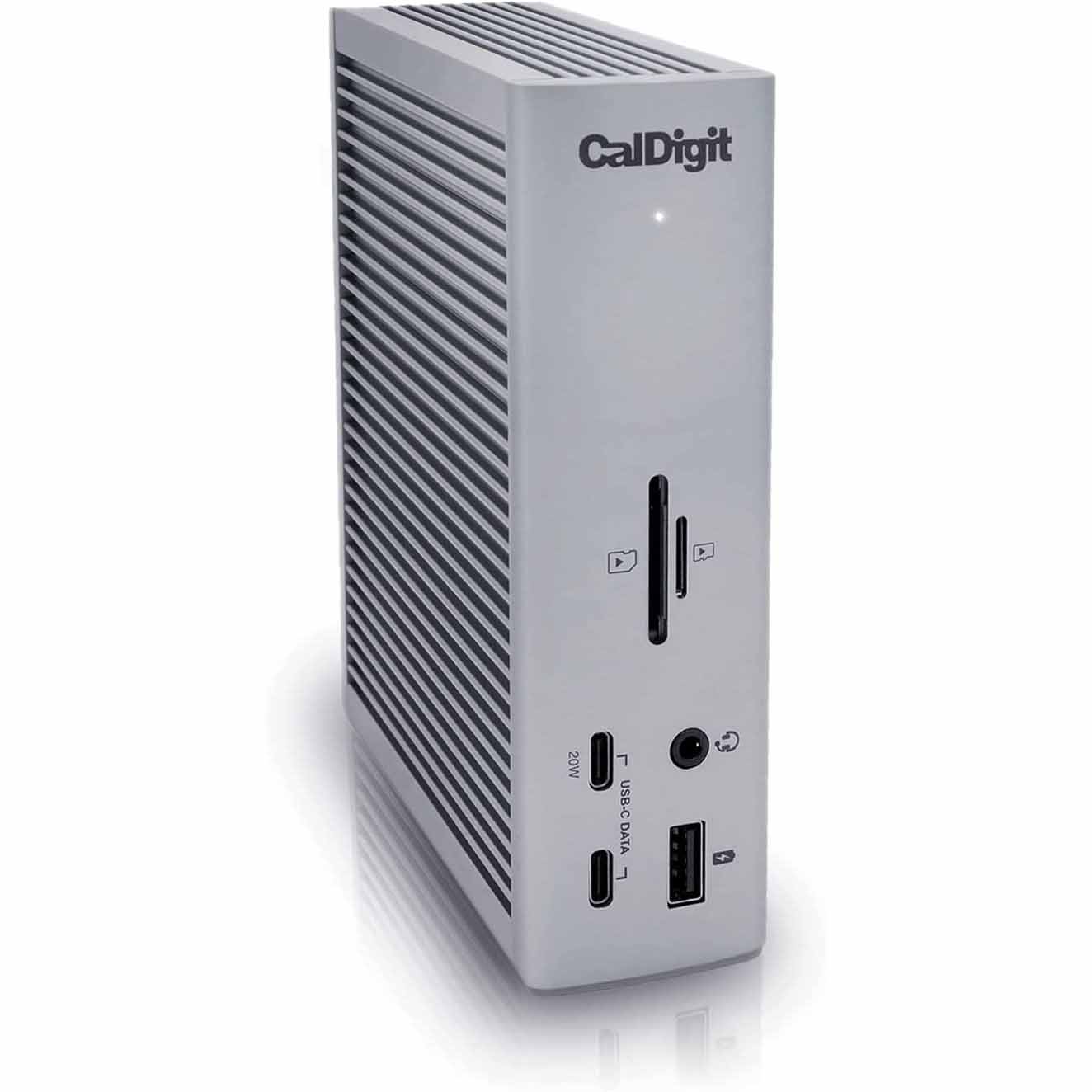
Best overall
CalDigit's TS4 offers the most ports in a durable, versatile design that works horizontally or vertically. It's the dock I use on my desk, bringing DisplayPort, UHS-II card readers, up to 98W of power delivery, and dual downstream Thunderbolt 4 connections.
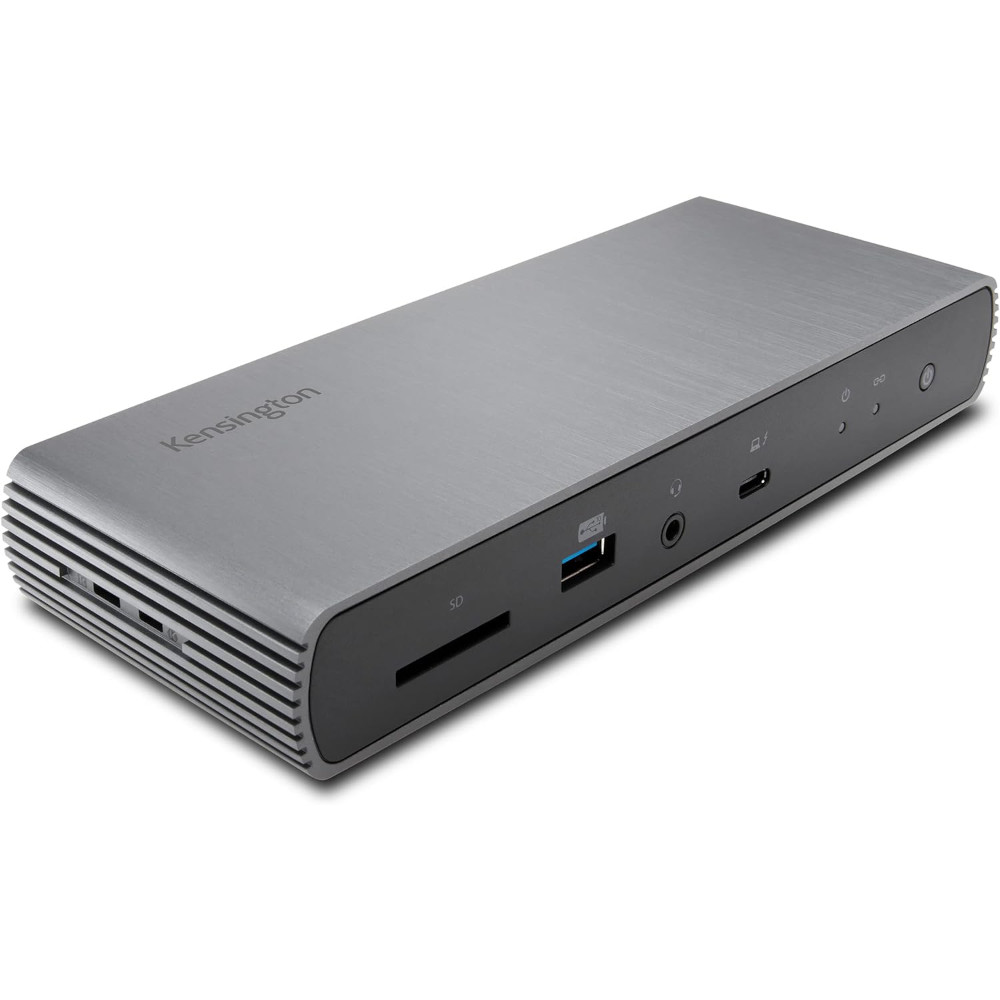
Best value
The SD5780T costs significantly less than the CalDigit TS4, yet it offers the right ports for most workflows. It supports dual 4K displays, it has two downstream Thunderbolt 4 ports, and it has a UHS-II SD card reader. As usual from Kensington, it comes with lock slots, pre-drilled mounting brackets, and a three-year warranty.
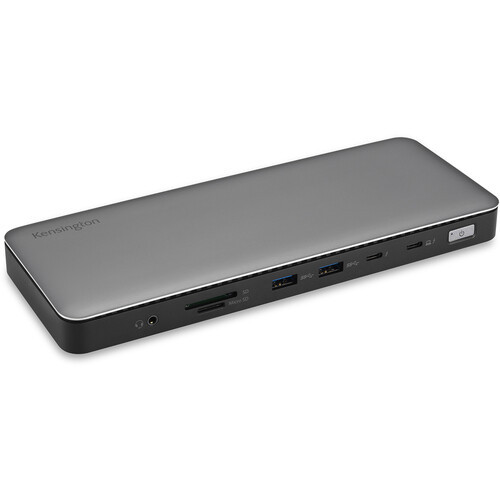
Best with Thunderbolt Share
Kensington's SD5768T EQ is a capable 12-port Thunderbolt 4 dock with dual 4K display support and UHS-II card SD/microSD card readers, but the major appeal is its Thunderbolt Share certification. It unlocks Intel's local sharing tool on any Thunderbolt 4 or 5 laptop, making this an ideal dock for multitaskers and collaborators.
Load the next products ↴
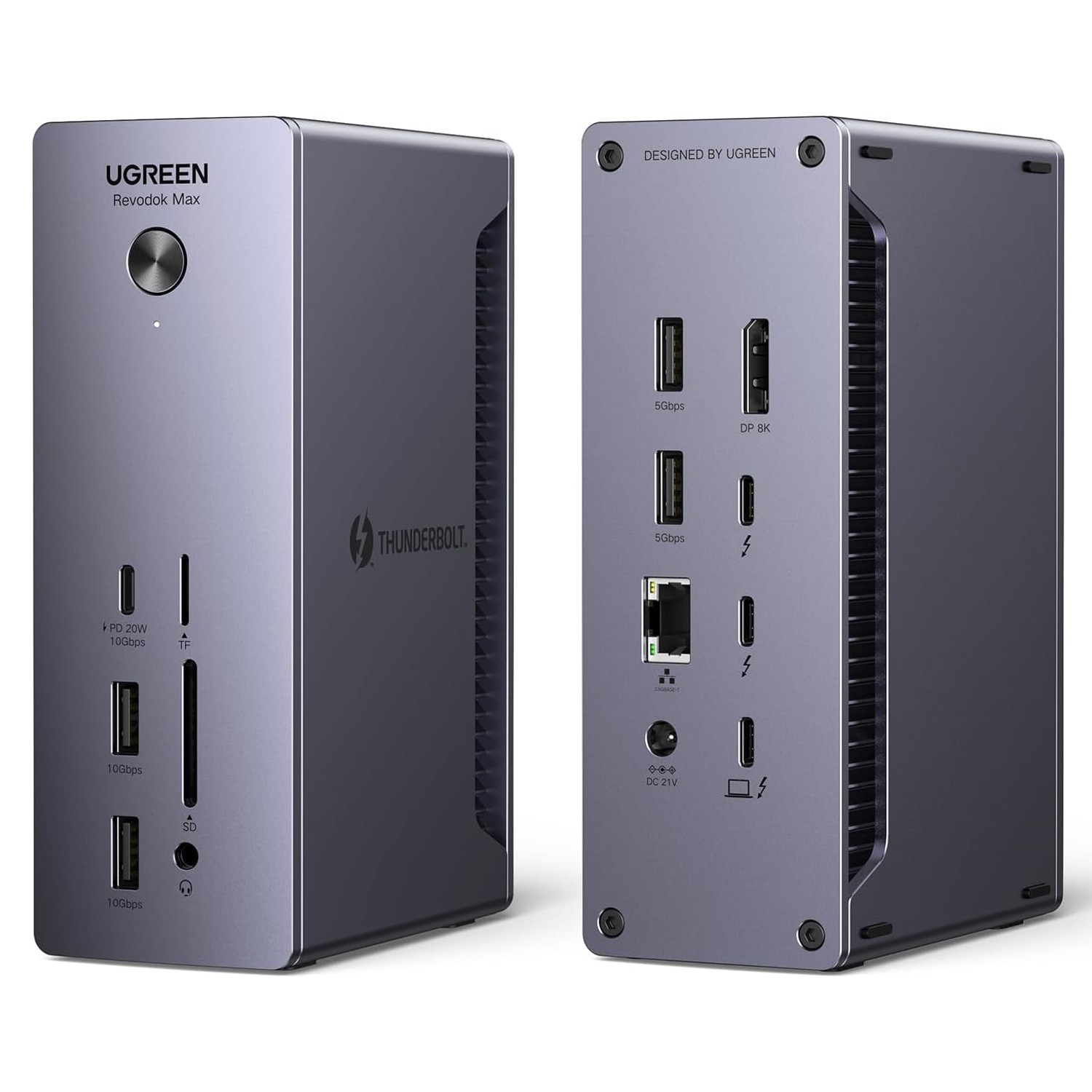
Premium pick
UGREEN takes a swing at CalDigit's TS4 with the Revodok Max 213, a 13-port powerhouse with dual downstream Thunderbolt 4, DisplayPort 1.4, UHS-II SD/microSD card readers, and 2.5Gbps Ethernet. It's large and it's built to a high standard, and it costs less than my top pick.
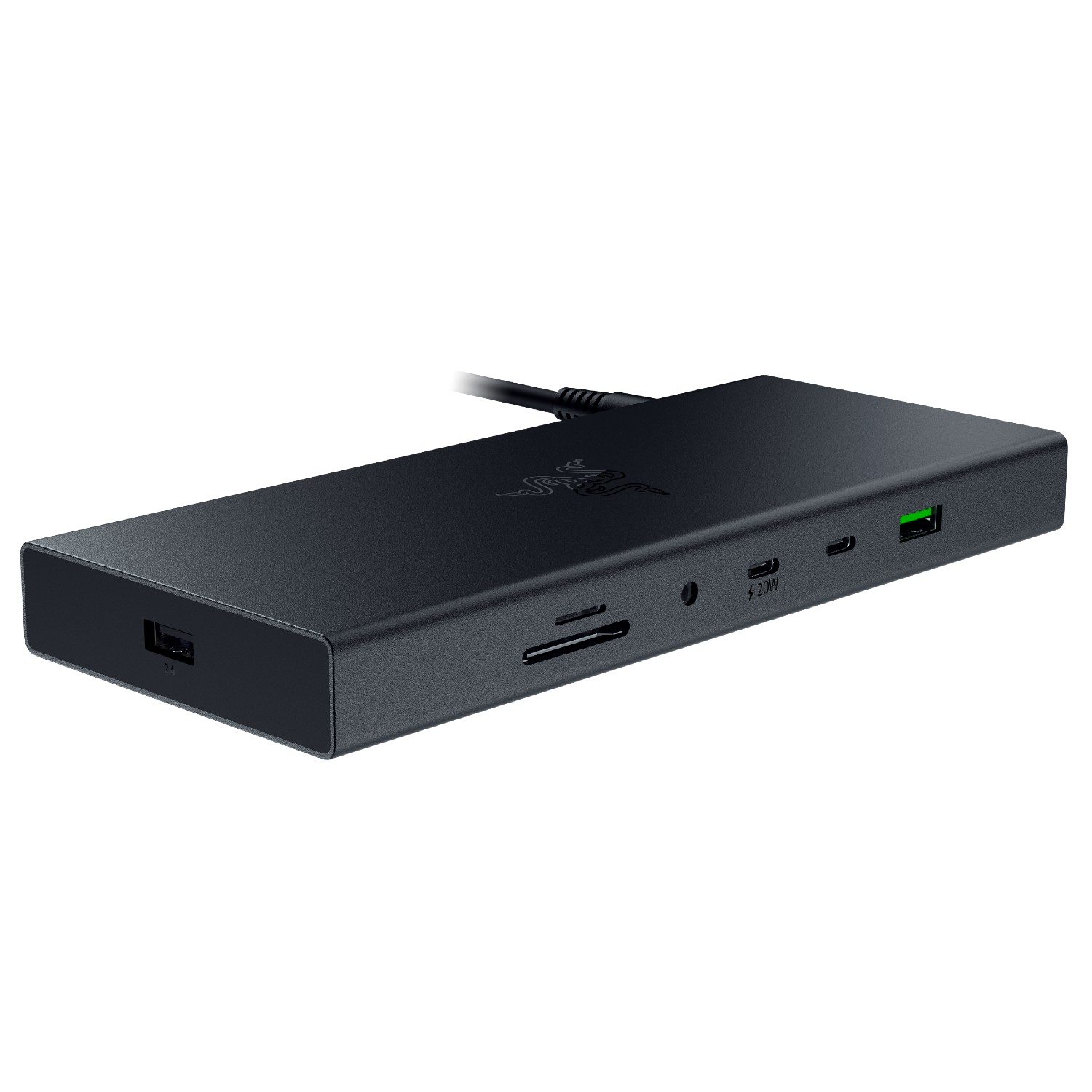
Best USB4
Thunderbolt 4 is an Intel technology that requires licensing, and USB4 is its no-name counterpart with wider compatibility. Razer's USB4 dock is lightly aimed at gamers with a special USB slot for a 2.4GHz receiver, but it tacks on 13 other ports for good measure. It's considerably cheaper than Razer's Thunderbolt 4 dock.
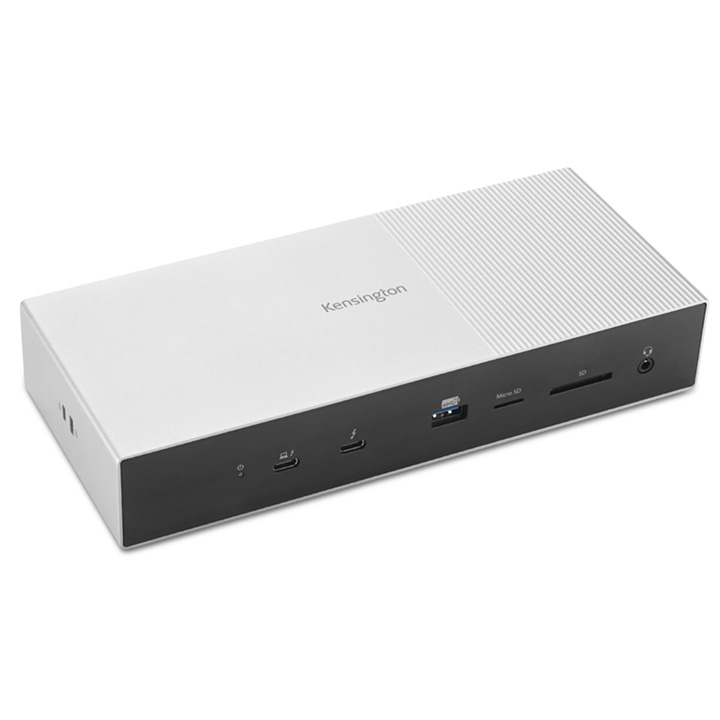
Best Thunderbolt 5
Thunderbolt 5 is the next evolution of Thunderbolt 4 (with backward compatibility), and you can prepare for the future with the SD5000T5 EQ. It doubles Thunderbolt 4's bandwidth to 80Gbps, delivering the best performance possible in a dock with a wide variety of ports.

Laptops are a primary focus for me at Windows Central, and the topic includes crucial accessories like docking stations. Having tested and reviewed plenty of docks and hubs, I can use my experience to offer informed buying advice to anyone who needs more ports.
My favorite Thunderbolt docks in 2025
Why you can trust Windows Central
Best overall Thunderbolt dock
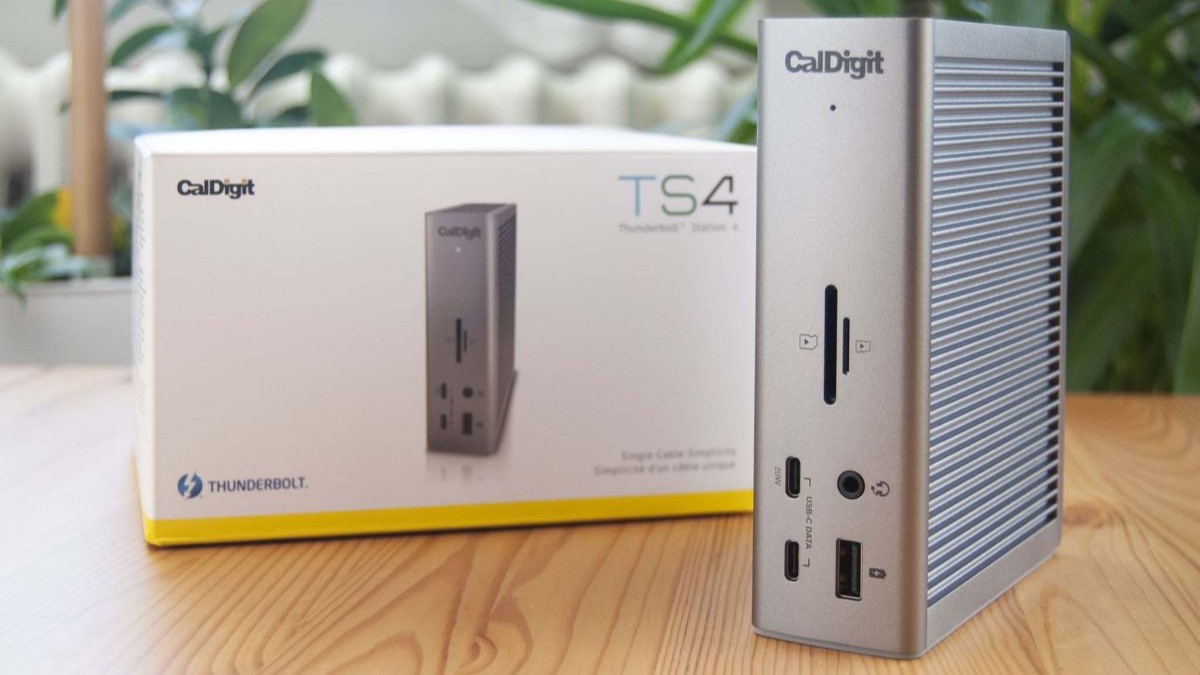

1. CalDigit TS4
Our expert review:
Specifications
Reasons to buy
Reasons to avoid
The CalDigit TS4 Thunderbolt 4 dock is the successor to the highly acclaimed CalDigit TS3 Plus. It retails for about $380 and has some steep competition from other docks, but it remains my top pick.
I’ve been using this Thunderbolt 4 dock regularly since my CalDigit TS4 review, in which I stated:
"CalDigit has followed up its awesome TS3 Plus with another knockout docking station. The TS4 has more ports than any of the competition — even factoring in the three audio ports — and it can deliver up to 97W of power to the host device. This opens it up to more accessories and more hosts than other docks, yet the TS4 is within the same price range and the bulk of the competition. If you have a Thunderbolt 4 laptop and want the best docking station, this is the one to get."
It follows a similar design as the TS3 Plus, with three solid aluminum pieces held together with four robust screws. It has a rubber pad on the bottom for a vertical orientation, and rubber feet can be added to the ribbed sides if you'd like to use it horizontally.
The TS4 boasts impressive connectivity. The 18 total ports are divided between the front and back of the dock, with the host Thunderbolt 4 port and two additional downstream Thunderbolt 4 ports located at the back.
While you might wonder why there aren’t four TB4 ports, one was traded for a native DisplayPort 1.4 connection. The back of the dock also includes four USB-A (10Gbps), 2.5Gbps Ethernet, USB-C (10Gbps), and dual 3.5mm audio ports. A Kensington lock slot adds an extra layer of security for office use.
The front of the dock has another USB-A port, a 3.5mm audio combination, dual USB-C ports (one with 20W of charging power), and UHS-II SD and microSD card readers that can be used simultaneously.
The dock supports dual 4K displays, each at a 60Hz refresh rate, or an 8K display at a 60Hz refresh rate. When connected to the host laptop, the dock can deliver up to 98W of power.
👀 See our full Caldigit TS4 review
Best value laptop dock
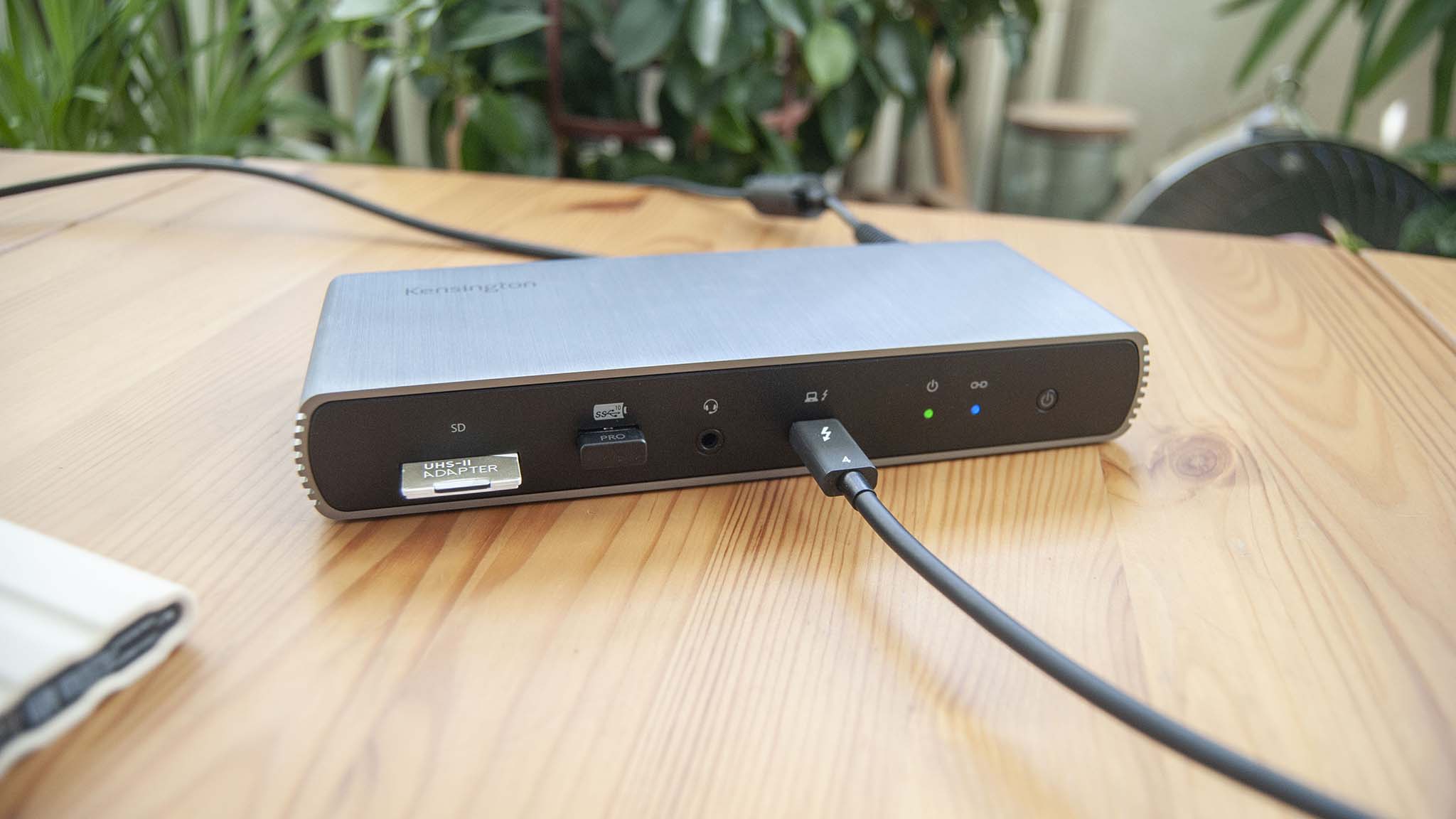

Specifications
Reasons to buy
Reasons to avoid
Kensington's SD5780T remains a top Thunderbolt 4 dock a couple of years after its launch, and significant price drops have landed it at about $211.
That makes it more attractive than ever, especially since I was recommending it at full price (about $350 and up). In my Kensington SD5780T review, I remarked:
"This is Kensington's best Thunderbolt 4 dock yet, and while it's certainly geared toward a professional environment, it can help anyone with a modern laptop get the connectivity they need for multi-screen and multi-accessory setups."
Ports are built into a metal frame, and the only con I listed in my review is the use of plastic faceplates. It's definitely not a dealbreaker, and the model I've had for a couple of years is holding up very well. As usual, Kensington provides a three-year warranty.
The dock can deliver up to 96W of charging power back to the host, and it otherwise has two downstream Thunderbolt 4 ports. HDMI 2.1 adds to video support, there are four USB-A 3.2 (Gen 2) ports, and a UHS-II SD card reader handles removable storage.
There aren't any surprises when it comes to display support, with the dock handling dual 4K screens at a 60Hz refresh rate. The dock is meant to sit flat on your desk, but pre-drilled holes make it easy to add a mounting bracket (sold separately for about $28).
👀 See our full Kensington SD5780T review
Best laptop dock with Thunderbolt Share
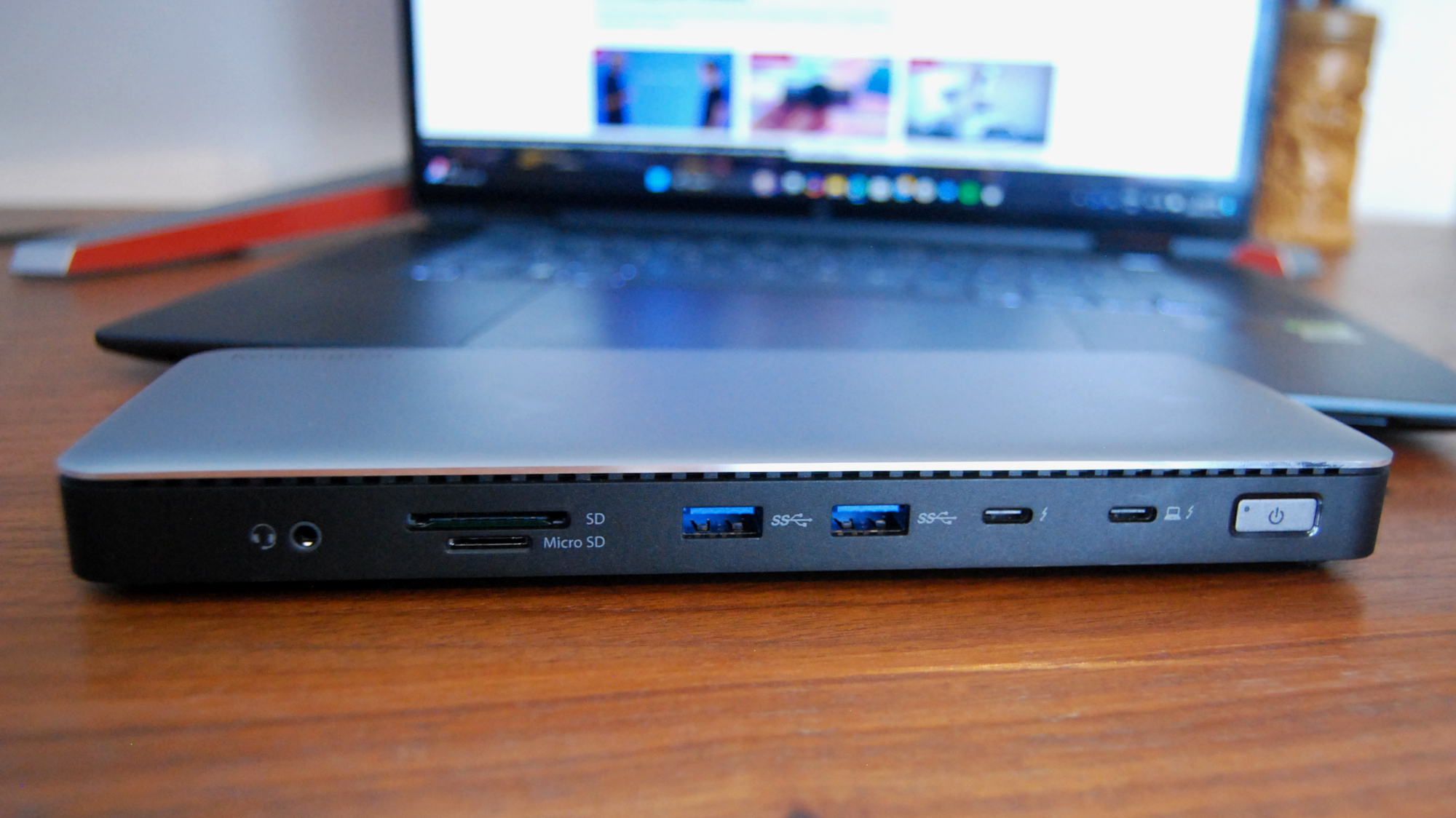

Specifications
Reasons to buy
Reasons to avoid
Kensington's SD5768T EQ is the most recent dock I reviewed; I gave it a Windows Central Best Award and 4.5 stars. A big part of the positive impression comes from the inclusion of Intel Thunderbolt Share certification.
It's a useful tool that's unfortunately available in only a few laptops, but the dock solves that problem with its own licensing.
Have two laptops with Thunderbolt 4 or 5? You can connect them locally with the dock and a couple of cables, opening up direct file sharing and syncing, PC control in a window, and more. It's proving useful for my workflow that involves multiple laptops, and it should be a boon for any creators or collaborators.
The dock has 13 total ports, including the host Thunderbolt 4 connection, downstream Thunderbolt 4, USB-C 3.2 (Gen 2), two USB-A 3.2 (Gen 1), two USB-A 3.2 (Gen 2), UHS-II SD/microSD card readers, two HDMI 2.0, 1Gbps Ethernet, and 3.5mm audio. All USB-A ports can charge, and it provides up to 96W of power to the host laptop.
Kensington pushes the warranty on its docks to three years, which bests most of its competition. And if you'd like to mount the dock to save space on your desk, pre-drilled holes for a compatible bracket are included. Kensington's lock slots are also there to secure it wherever you go.
At about $300, it's cheaper than my top pick, and the inclusion of Thunderbolt Share should make it a top option for a specific set of professionals.
👀 See our full Kensington SD5768T EQ review
Best premium Thunderbolt laptop dock
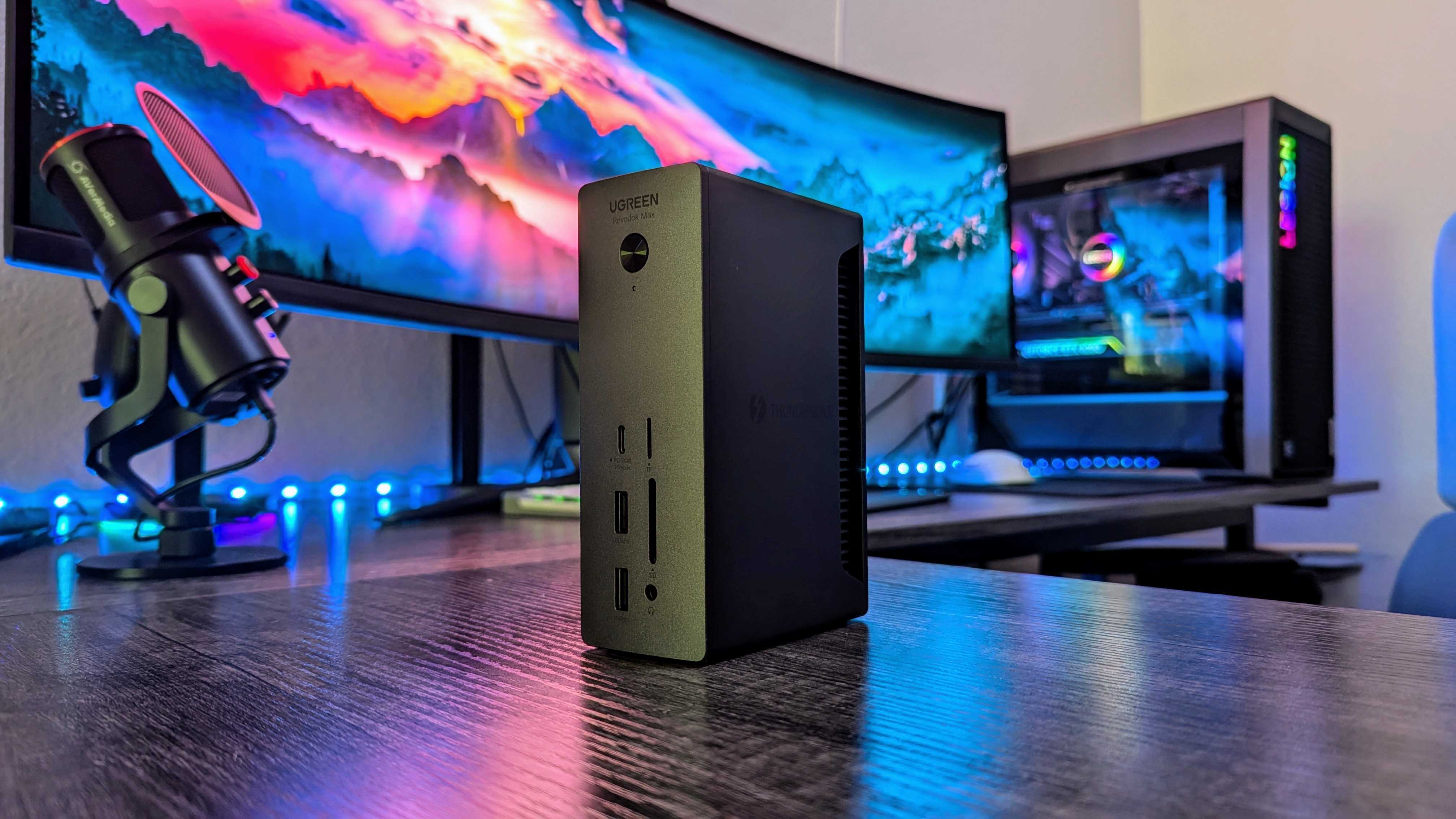

Specifications
Reasons to buy
Reasons to avoid
UGREEN's Revodok Max 213 reminds me of the CalDigit TS4's design, with a chunky aluminum case that can withstand a lot of punishment.
With 13 ports, it doesn't have the same extensive connectivity as my top pick, but it costs less at $300. Even better, Amazon Prime members can often find it discounted for about $225.
Windows Central's Zachary Boddy gave the dock a 4.5-star rating and a Recommended Award in their Revodok Max 213 review, saying:
"This imposing hunk of aluminum represents the best UGREEN can accomplish with Thunderbolt 4, and it is an impressively capable docking station with plenty of ports and great thermal management. It's massive, though, and its high price tag puts it in the same range as some very competitive alternatives from companies like CalDigit."
The dock provides host laptop charging up to 90W, and the mix of dual downstream Thunderbolt 4 ports and DisplayPort 1.4 allows it to handle up to dual 4K monitors each at a 60Hz refresh rate.
SD and microSD card readers handle removable storage, there are plenty of USB-A ports for accessories, and the Gigabit Ethernet is handy when Wi-Fi isn't an option.
Yes, it trims back some of the port selection compared to the CalDigit TS4, but it's quite a bit cheaper and still has the right ports for most workflows.
👀 See our full UGREEN Revodok Max 213 review
Best USB4 laptop dock
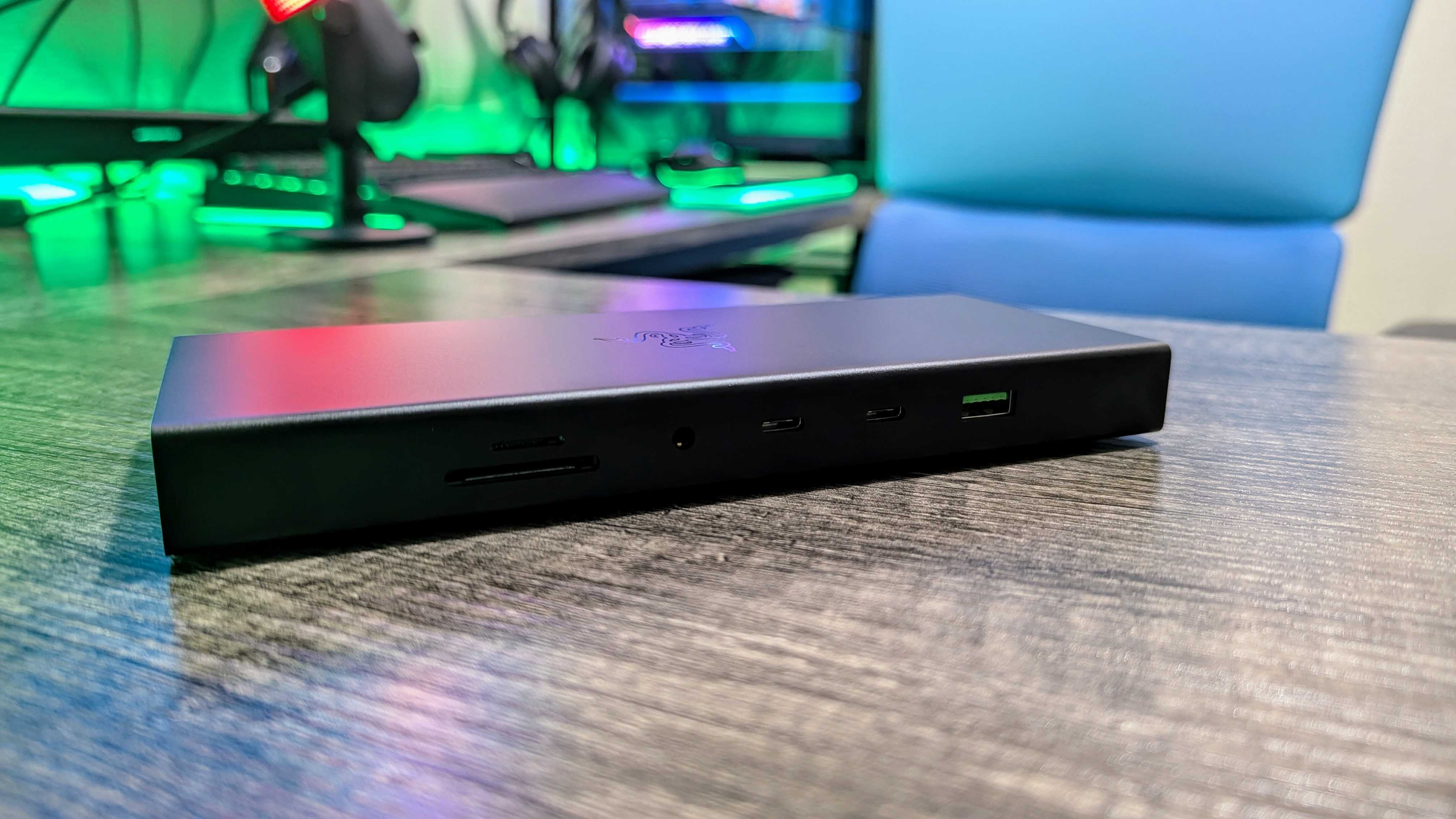

Specifications
Reasons to buy
Reasons to avoid
Razer's USB4 Dock isn't technically a Thunderbolt 4 dock, but it achieves many of the same goals with wider compatibility and a cheaper price.
I wrote about how Thunderbolt 4 differs from USB4 in a separate piece, but here's the short answer: Thunderbolt is an Intel technology that must be licensed for use, which is why you don't see it on many AMD PCs.
USB4 is built on the older Thunderbolt 3 backbone, giving it many of the same abilities, including dual 4K display support at 60Hz and up to 100W of charging power. USB4 at 40Gbps is the peak, and that's what the Razer dock offers. It's compatible with Thunderbolt and USB4 PCs.
It's a slim piece of hardware with the usual black Razer finish and logo. It's not specifically made for gamers, but it'll fit right in with other gaming accessories and also has a special USB-A port that Razer says can reduce interference with a 2.4GHz receiver (like the one you use for a gaming mouse).
Windows Central's Zachary Boddy reviewed the Razer USB4 dock, remarking:
"The Razer USB4 Dock may not carry the Thunderbolt branding, but it's every bit as capable as the very best Thunderbolt 4 docking stations. This 14-in-1 dock is practically flawless and a great value to boot, and there's even a unique feature for gamers."
At about $230, it's significantly cheaper than even Razer's own Thunderbolt 4 Dock Chroma (currently sitting at about $290), making it a versatile option for anyone with a tighter budget.
👀 See our full Razer USB4 Dock review
Best Thunderbolt 5 laptop dock
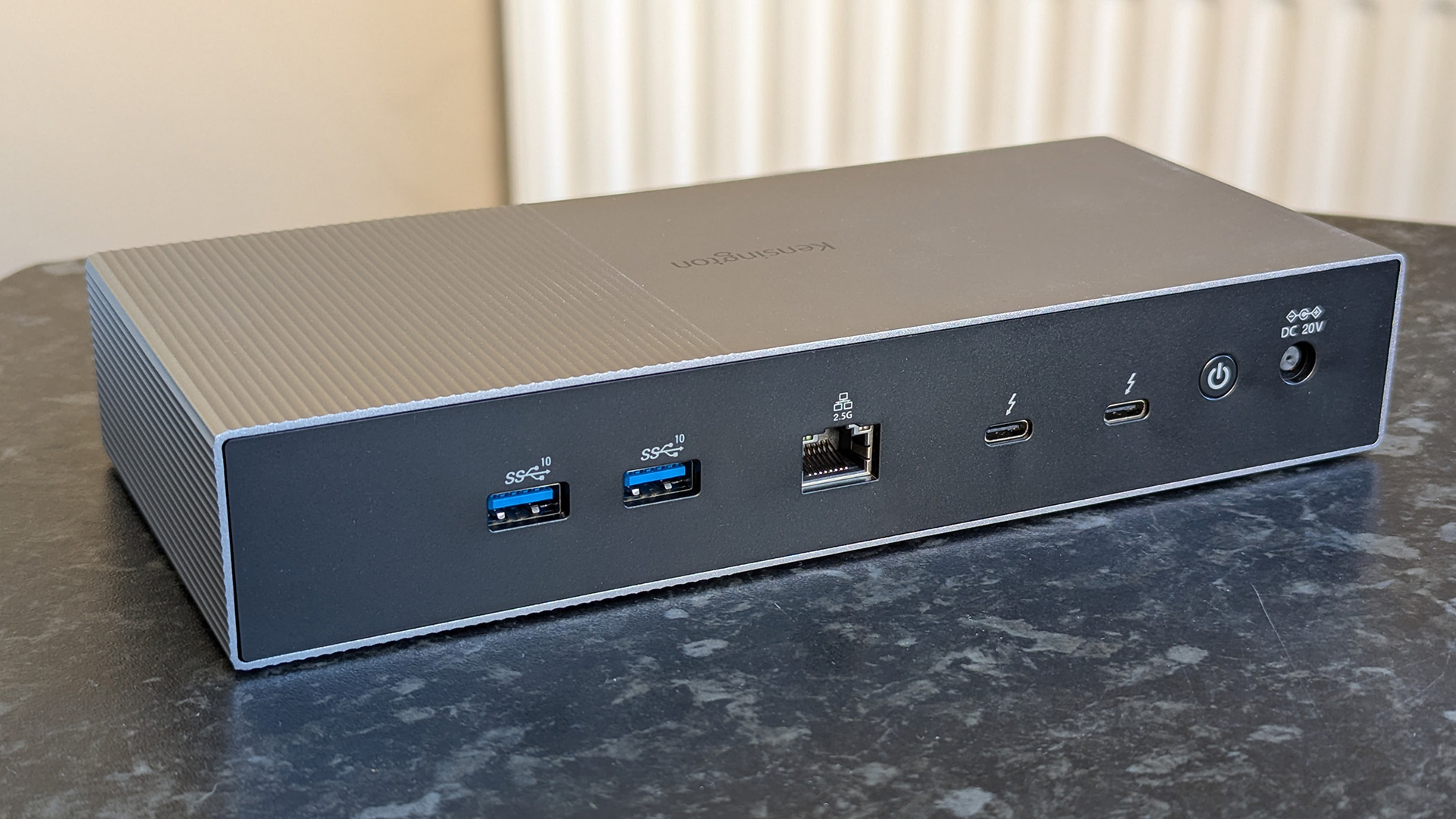

Specifications
Reasons to buy
Reasons to avoid
Thunderbolt 5 is the logical evolution of Intel's connectivity tech, and while it's still a rare feature in laptops, you can set yourself up for the future with something like Kensington's SD5000T5 EQ.
It's a powerful Thunderbolt 5 docking station that's backward compatible with Thunderbolt 4 and USB4, and at about $390, it's not much more expensive than my top pick.
Windows Central Senior Editor Ben Wilson reviewed the SD5000T5 EQ, remarking:
"Kensington has built some of the best Thunderbolt docking stations since the technology was first introduced, so it's no surprise to see the company delve head-first into the new Thunderbolt 5 standard. While it is, without question, too early to offer full functionality to laptop owners, the reasonable price and forward-thinking design still have it placed as one of the best options for those who need to connect a wealth of devices to a slim offering of ports. It's jumping the gun, but it's a shot worth taking since it's technically the best."
Thunderbolt 5 doubles its predecessor's bandwidth to 80Gbps, bumping the external display support all the way up to triple 4K @ 144Hz or double 8K @ 60Hz. That's a big boost for multitaskers, but your laptop needs Thunderbolt 5 as well to take full advantage.
The dock offers three downstream Thunderbolt 5 ports instead of native video outputs like HDMI or DisplayPort, it has UHS-II SD/microSD card readers, and it retains plenty of USB-A ports for older accessories.
👀 See our full Kensington SD5000T5 EQ review
Honorable mentions
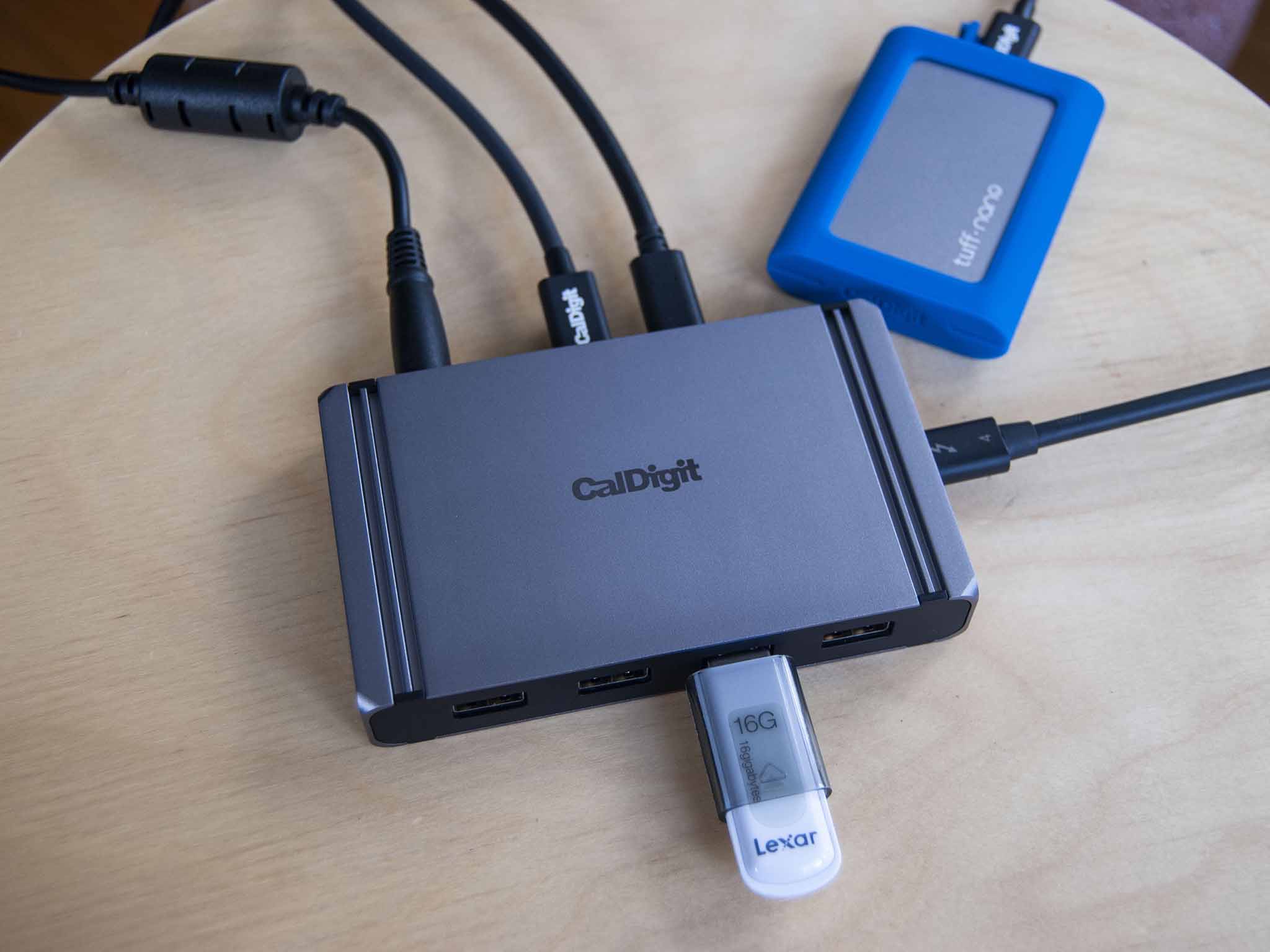

I've been testing laptop docking stations for nearly a decade at this point, and the rest of the Windows Team is always on the lookout for the latest hardware available for testing.
If the best Thunderbolt laptop docks I've listed above don't catch your attention, I've added a few more honorable mentions.
- CalDigit Thunderbolt 4 Element Hub: CalDigit's Element Hub has been around since 2021, and it remains a stellar option if you'd like to split your laptop's Thunderbolt 4 port into multiple USB-A and downstream Thunderbolt 4. 👉 Read the full CalDigit Element Hub review
- CalDigit Element 5 Hub: The upgraded version of the original Element Hub moves on to the Thunderbolt 5 standard, and it's compatible with everything down to Thunderbolt 3, USB4, and USB-C. This is the next dock I plan to review. 👉 See the Element 5 Hub at CalDigit
- Dell UltraSharp 27 4K Thunderbolt Hub Monitor: Considering a new monitor as part of your desk upgrade? Dell's 27-inch 4K monitor comes with a built-in Thunderbolt 4 hub, capable of handling a wide range of accessories. 👉 Read the full Dell UltraSharp U2725QE review
How we test Thunderbolt docking stations at Windows Central
The best Thunderbolt docks all undergo a similar testing process that allows us to easily compare products.
Port selection is the first thing taken into account. Not all users need the same selection of ports, so discovering exactly why a certain dock offers specific connectivity — DisplayPort rather than HDMI, extra downstream Thunderbolt, many USB-A, etc. — is crucial.
Port performance is tested in two ways. First, transfer speeds over USB and/or SD card readers are checked with external drives and CrystalDiskMark benchmarking software.
For ports that offer power, I check how much is actually available for accessories with an in-line USB power meter.
How well the laptop keeps its cool under load is also factored in. You want a dock that doesn't overheat, and surface temperatures can be measured with a FLIR camera.
Size and price are more important than ever when buying a laptop dock. You generally want something that's going to take up the least amount of space possible, and you also don't want to overspend on features you won't use.
For example, CalDigit's TS4 is overkill in terms of price and performance for those who just want to connect a mouse, keyboard, and a couple of screens to their laptop.
That's why I've included plenty of alternatives that came out looking good on the other side of our testing process.
How to choose the best Thunderbolt dock for your laptop
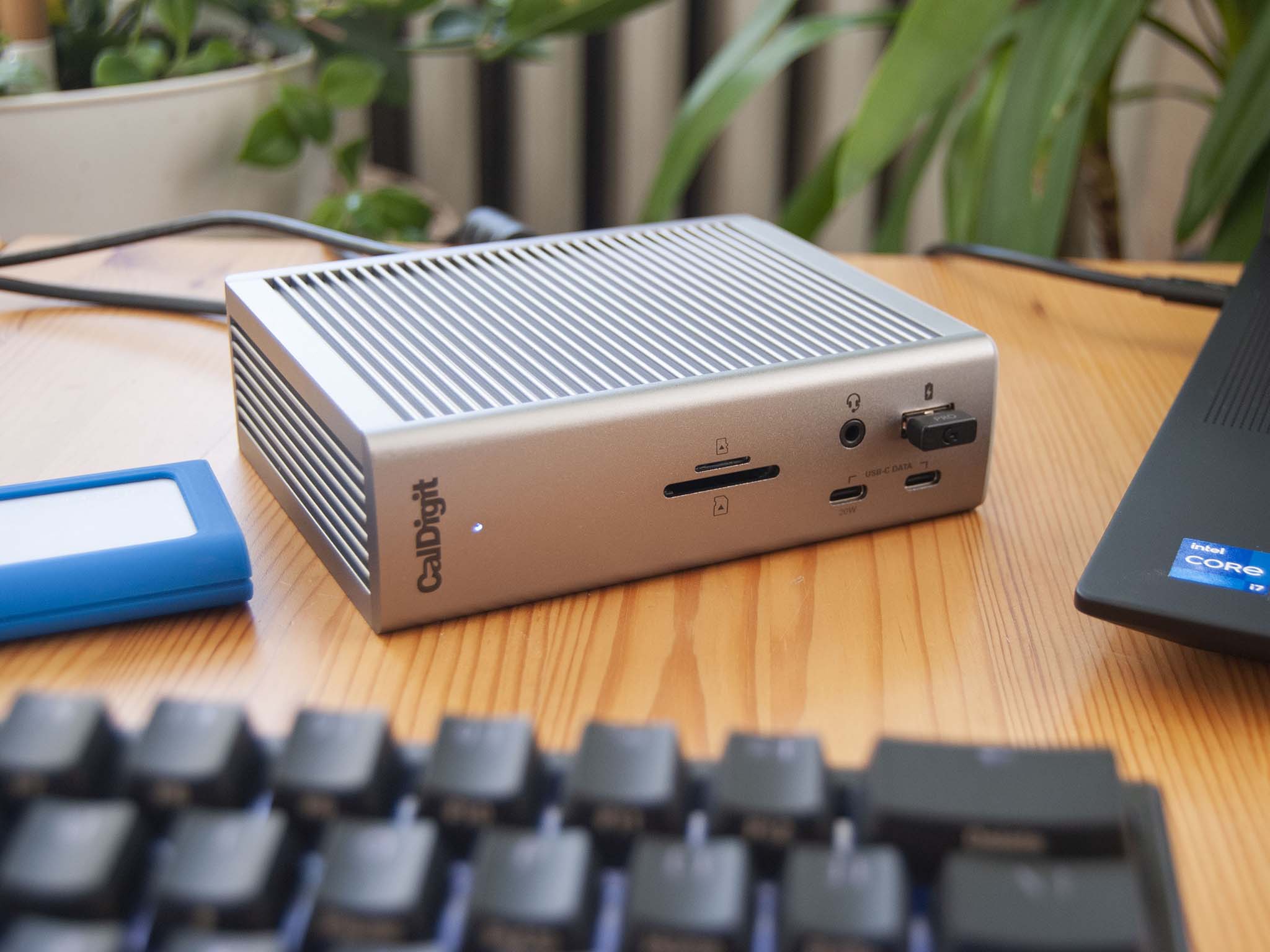

Thunderbolt 4 isn’t just a standard; its interoperability with USB-C and USB4 broadens the range of devices you can connect.
Even if your PC is equipped with Thunderbolt 3, USB 4, or USB-C, many of these Thunderbolt 4 docks will offer additional ports, charging capabilities, and more.
My top overall pick for modern Windows laptops remains the CalDigit TS4. It's the dock I've had on my desk for a couple of years, and it's never failed me.
It has the most ports of any dock in my curated list, yet it's relatively compact in a durable aluminum shell. The $380 price tag is no doubt too much for lots of users who don't have as many accessories and displays, which is where the Kensington SD5780T steps in as a top alternative.
The SD5780T costs much less at about $212, and its varied selection of ports, dual 4K display support, and three-year warranty make it very attractive. Razer's USB4 Dock is also on the affordable side at about $230.
For those who want to prepare for the future of Thunderbolt 5, Kensington's SD5000T5 EQ can be picked up for about $390 and should remain relevant for many years.
And if you'd like to test out Intel's Thunderbolt Share technology, something like the $300 SD5768T EQ is the best option I've used.
Thunderbolt laptop docking station: FAQ
What is a Thunderbolt 4 dock and why might you need one?
The purpose of a Thunderbolt 4 dock is expansion. Where desktop PCs traditionally have a large array of ports to connect external devices to, laptops usually don't. That's where Thunderbolt 4 steps in.
By using the USB-C connector, it's possible to have Thunderbolt 4 even on the thinnest of laptops. Connecting a dock allows your laptop to use a single cable for power, display output and any number of USB peripherals, adding in functionality you don't have included as standard.
What's the difference between USB4 and Thunderbolt 4?
Thunderbolt 4 and USB4 are easy to confuse, not least because both offer the same USB-C connector and the same maximum data transmission performance (40Gbps). Though USB4 can only send at this rate over 1 meter, half that of Thunderbolt 4. USB4 is even based on the Thunderbolt protocol, but the two are not the same. They're just very similar.
The minimum requirements for USB4 are much lower at 20Gbps, while Thunderbolt 4 is at 32Gbps. Likewise, the minimum power requirements for Thunderbolt 4 are double those of USB4 at 15W versus 7.5W.
When it comes to docks, some Thunderbolt 4 docks may well be fully or almost fully compatible with USB 4, but it's not necessarily guaranteed. Before buying, it's always worth double-checking your own hardware and ensuring you get what you're looking for.
Do USB-C hubs work with Thunderbolt 4?
No. USB-C hubs and Thunderbolt 4 share a similar physical connector, but they serve different purposes and you need to ensure the dock you are purchasing is advertised as Thunderbolt 4 if you need this compatibility.
Standard USB-C hubs are much cheaper and do not support Thunderbolt-specific features like higher power delivery, transfer speeds and video delivery through a single cable.
Is Thunderbolt 4 worth it?
Thunderbolt 4 is considerably more expensive than USB-C, so its individual worth depends on your specific needs and usage.
Thunderbolt 4 offers high-speed data transfer of up to 40 Gbps, which is essential for working with large files, high-resolution videos, and demanding applications.
Additionally, if you are a creative professional or designer, the ability to run two 4K monitors simultaneously will be appealing.
Should you buy a Thunderbolt 5 dock instead?
Thunderbolt 5 is set to take over for Thunderbolt 4 at some point, but so far, the adoption rate isn't very impressive.
Not many laptops have TB5 yet, so buying a dock to match should be reserved for those who are future-proofing or those who have some extra money to burn.
Thunderbolt 4 will remain relevant for the foreseeable future, and backward compatibility means it won't stop working even if your laptop upgrades to Thunderbolt 5.
Get the Windows Central Newsletter
All the latest news, reviews, and guides for Windows and Xbox diehards.

Cale Hunt brings to Windows Central more than eight years of experience writing about laptops, PCs, accessories, games, and beyond. If it runs Windows or in some way complements the hardware, there’s a good chance he knows about it, has written about it, or is already busy testing it.
- Richard DevineManaging Editor - Tech, Reviews
- Jennifer Young
- Rebecca SpearGaming and News Editor
